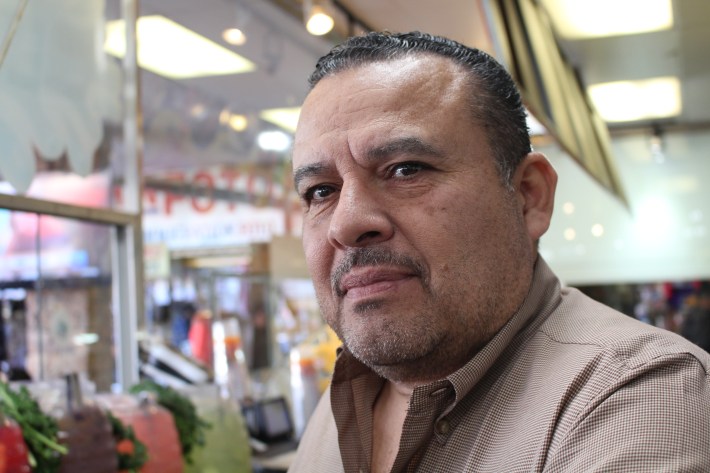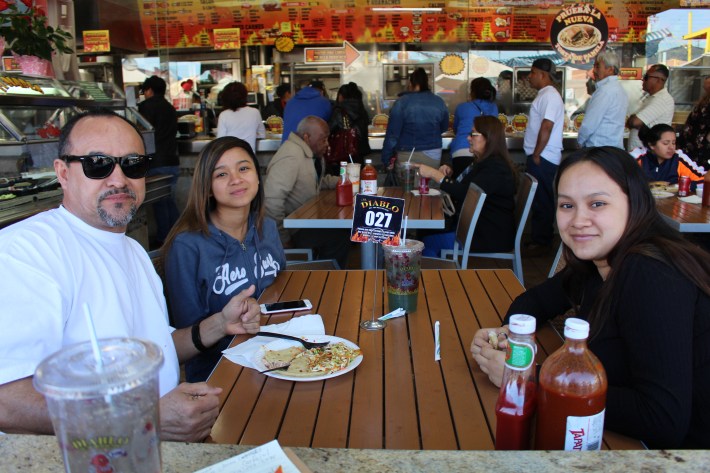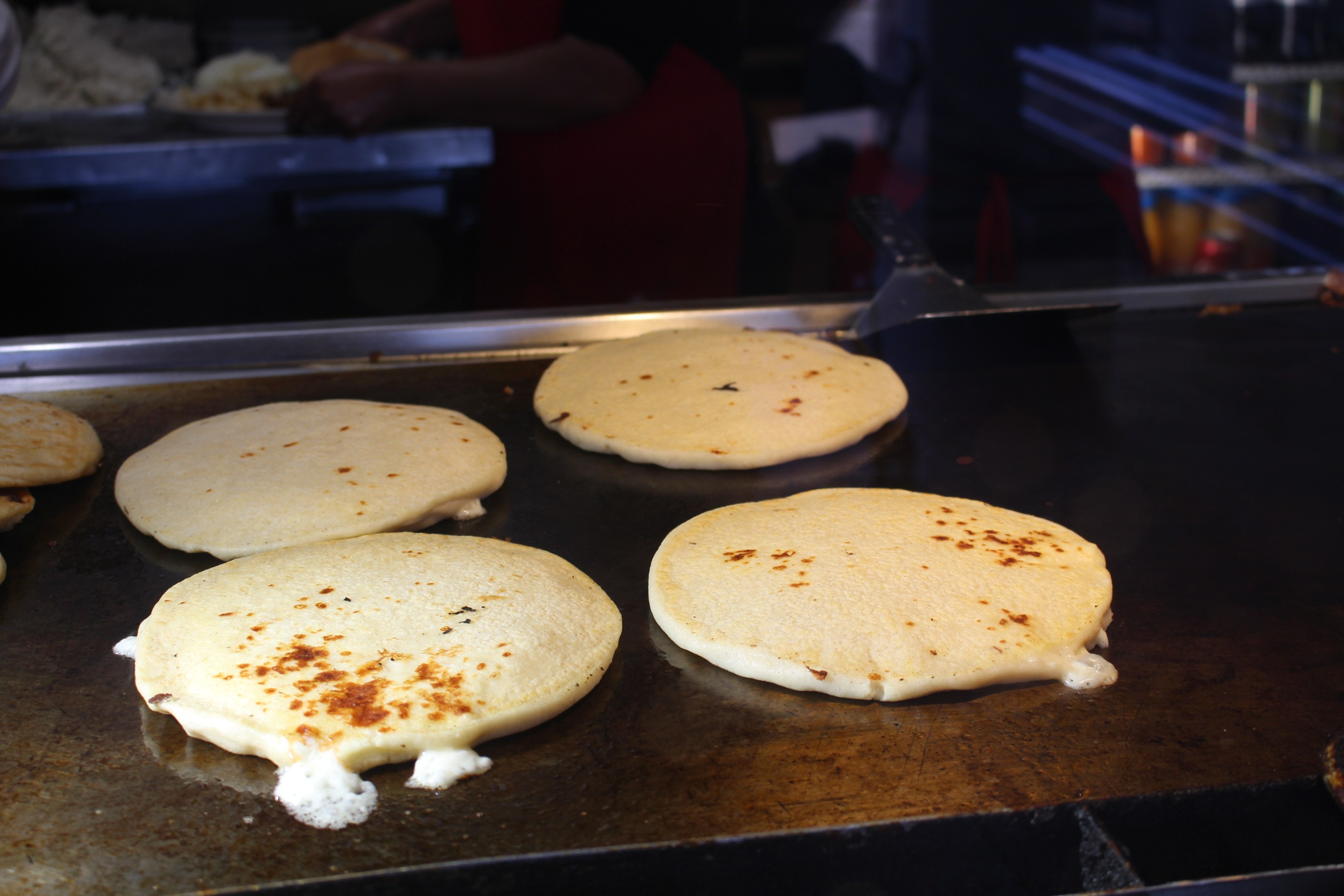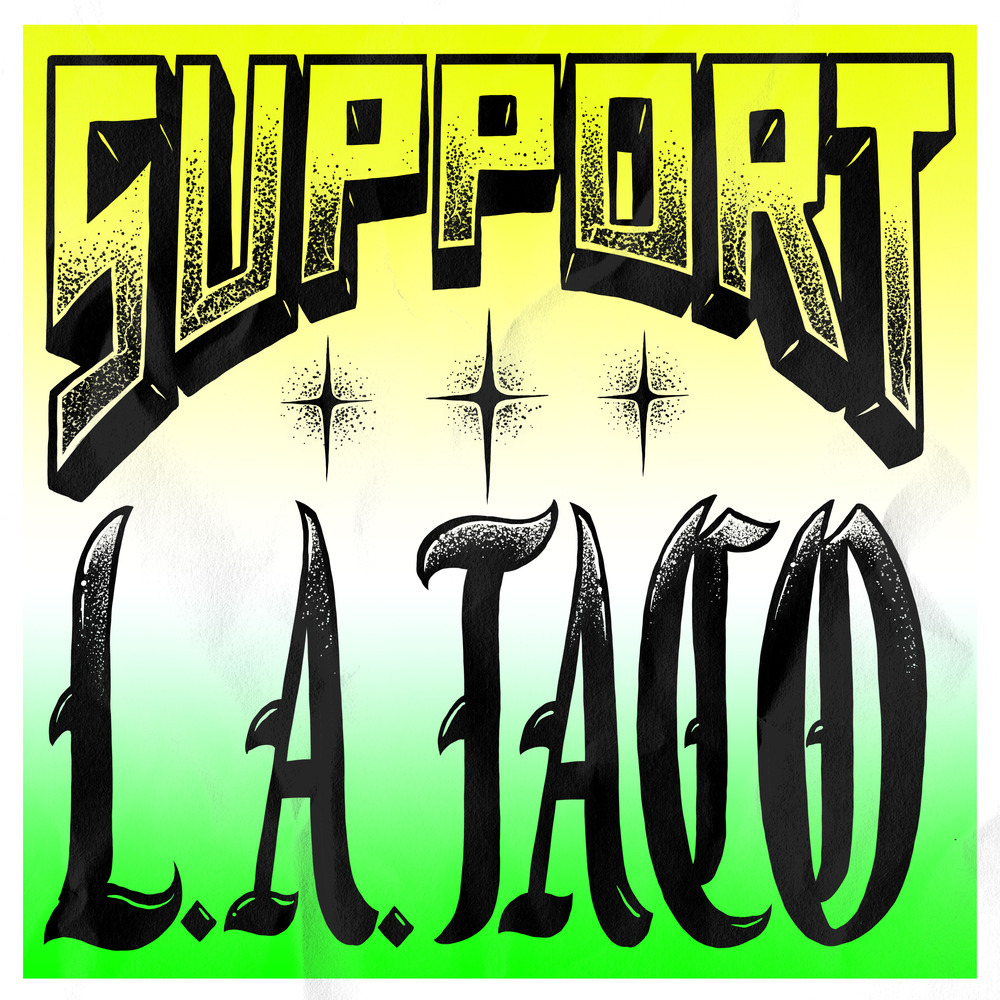Waving his hand, Jaime Carbajal motions me to cross the threshold of his pupuseria’s kitchen, leaving the bustling and boisterous food court area behind. In exchange, I am now in the narrow, noisy production line. I become aware of the precious space I’m taking up when suddenly the volume decibels increase again as he calls out two of his workers to tend the agua fresca station of his restaurant inside the Alameda Swap Meet.
El Diablo is a Mexican Restaurant, and yet tucked inside the heat-lamped entrails of lengua and chorizo, you’ll find L.A.’s largest and most expensive pupusa.

The Alameda Swap Meet is an indoor marketplace located south of downtown. El Diablo sits in a corner surrounded by 180 chairs, twenty or so tables, and a constant rush of customers. It’s the restaurant that claims to be the first to offer the giant pupusas in L.A. and the owner is prepared to back this up against anyone. “We don’t like to copy anybody, that’s why our pupusas are the biggest, and the most expensive you’ll find. We don’t like to skimp on ingredients and that’s what makes it a success,” said Carbajal, in Spanish.
Every day, El Diablo preps 300 to 500 pounds of fresh masa just for pupusas and every weekend they serve up to 5,000 customers.
Thirty years ago, when Carbajal opened El Diablo, his clientele was primarily a Mexican crowd. However three years into his business, he slowly noticed more and more Central Americans asking him for pupusas. “We were selling gorditas but they kept asking us for pupusas; so we started selling pupusas 27 years ago,” said Carbajal. With the help of two pupuseras, Carbajal learned the art of pupusa making and together they developed what would later be their own unique interpretation.

On average, a traditional Salvadoran pupusa is about four to five inches wide. In El Salvador, it’s customary to even see them smaller than that, but each Diablo pupusa is anywhere from seven and a half to nine inches in diameter. These monster pupusas with curtido and tomato salsa will run you $4 a piece. That’s about twice or three times the price that a pupusa at any other establishment in L.A.

This pupusa’s flavor has a tight grip on its Mexican foundation. A single bite of the revuelta pupusa will transport you to a land where your favorite taco truck and carnitas spot are happy neighbors. The texture of the masa is reminiscent of a Mexican tamal, reincarnated. All the while, the curtido and tomato salsa ground you back in the Salvadoranness of it all. Both cultures represented and weaved in the textures, flavors, and familiarities of both cuisines. This pupusa is not exactly Salvadoran and not exactly Mexican — but definitely very L.A.
'I love all the cheese in the pupusa. It’s like a quesadilla, only I like this better.'
Chief among the giant pupusas, is an even more baller $6 option called the “Estilo Libre” A pupusa with no cultural bounds, where the customer can request any filling available from their expansive menu. Customers here can request rajas de queso, mushroom, shrimp, squash blossoms, and even pupusas de queso con huitlacoche.
Again, this is Los Angeles.
“Our community has been misinterpreted. When it comes to eating, we don’t skimp out. As long as it’s good, I’ll eat first, and then I’ll worry about the rest,” responds Carbajal immediately after being asked how he gets away with selling a $5 pupusa to a working-class community where families make every dollar stretch. Out of the 27 years of offering the giant pupusa, he has only offered a discount once, one giant pupusa for 99 cents. To his surprise, his clientele, was suspicious of the deal — questions about the quality and freshness of the food quickly made him realize what a mistake he had made. Since then, he’s never again entertained the idea of a discount.

Every day, El Diablo preps 300 to 500 pounds of fresh masa just for pupusas and every weekend they serve up to 5,000 customers. These estimates validate the swarming crowds around the premises.
This pupusa is not exactly Salvadoran and not exactly Mexican — but definitely very L.A.
“I get these because they’re so big,” said Pedro Torres, a long time customer of the Alameda Swap meet. Torres who makes the trip from neighboring Compton, originally came to the swap meet for mariscos with his daughters. As he waited to order, he instead realized they wanted a pupusa to share amongst the three of them.
Torres’ daughter, Irlanda Moreno, grabbed the fork from her Dad, and cut a piece of the pupusa,
“I love all the cheese in the pupusa. It’s like a quesadilla, only I like this better.”







